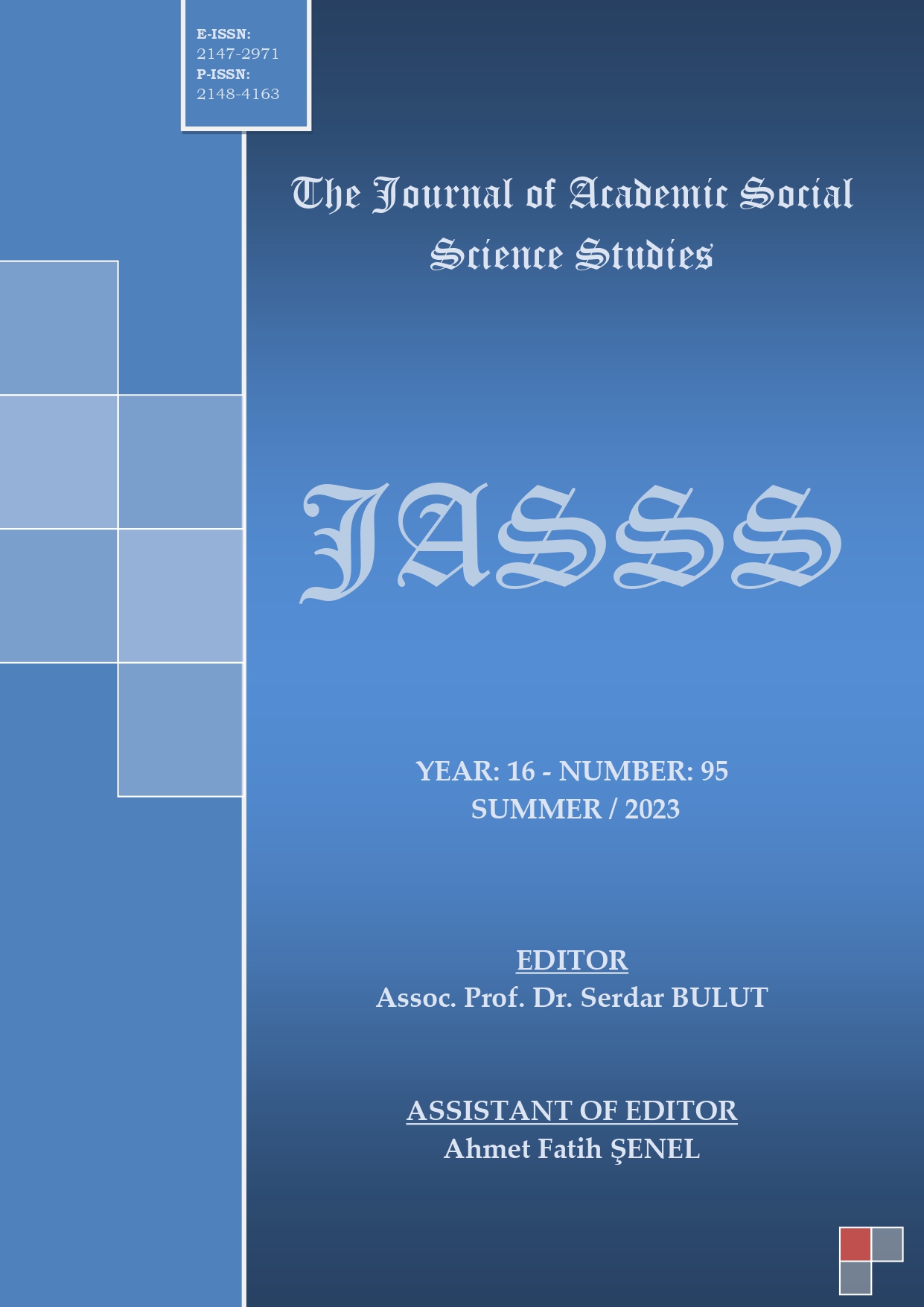Author :
Abstract
On dokuzuncu yüzyıl Batılı kadınların hayatlarında önemli değişimlerin yaşandığı bir yüzyıldır. Sanayi Devrimi öncesi yalnızca ev, aile ve çocuklarının bakımlarından sorumlu olan kadın, devrim sonrası fabrikalarda çalışmaya başlamıştır. Çalışma şartlarındaki olumsuzluklar ve emeğin dengesiz ücretlendirilmesi, kadınların işverenlere yönelik karşı tavır geliştirmelerine neden olmuş, çalışan pek çok kadın bir araya gelerek temel hak ve özgürlükler kapsamında mücadeleler vermiştir. Kadınların bu karşı duruşlarına, yüzyılın sonlarına doğru yaşanan modernizm de katkı sağlamış, geleneksel toplumun kurallarını ve yapılarını sorgulatarak her alanda değişimi zorlamıştır. Olumsuz çalışma koşulları ve modernizm kadınlar tarafında cinsiyete bağlı ayrımcılığı gündeme getirmiş, kadınların her alanda görünmez olmalarına neden olan, bu yönüyle temel haklar olarak nitelendirilen oy kullanma hakkı, istihdam olanakları ile çalışma koşullarının iyileştirilmesi, eğitim hakkı ve kadınların yasalarla haklarının korunması yönünde reformları başlatmıştır. Bu mücadeleler kadınların var olan kimliklerini ve benlik duygularını dönüşüme uğratmış, yüzyılın sonlarına doğru Yeni Kadın’ın ortaya çıkmasını sağlamıştır. Bu noktadan hareketle bu araştırmanın amacı, on dokuzuncu yüzyılda Sanayi Devrimi ve modernizmle birlikte kadınların temel hak ve özgürlükler kapsamında verdikleri mücadeleler sonucunda ortaya çıkan “Yeni Kadını” tanıtmayı amaçlayan bir derleme araştırmasıdır. Çalışmada öncelikle on dokuzuncu yüzyılda Batılı kadınların toplumdaki statüleri ve konumları, iki toplumsal değişim etkeni etrafında, Sanayi Devrimi ve modernizm üzerinden ele alınmıştır. Devamında, bu iki toplumsal olayın kadınlar üzerinde yarattığı değişimlerden yola çıkarak oy kullanma hakkı, istihdam olanakları, eğitim hakkı ile yasalarda reform talepleriyle ilgili verdikleri mücadeleler ayrı başlıklar altında incelenmiştir. Sonrasında, yüzyılın sonlarında ortaya çıkan Yeni Kadın’ın kim olduğu, değişim ile temsil ettiği yönleri açıklanmıştır. Çalışma sonucunda on dokuzuncu yüzyılda Batılı kadınların bazı ülkelerde oy kullanma hakkını elde ettiği ancak bu hakkın yasalarla güvence altına alınmadığı, istihdam olanaklarında karar verici mesleklerden olabildiğince uzak tutularak daha çok ev ve annelikle ilişkilendirilen meslekler ile fabrikalarda ve çeşitli işlerde işçi statüsünde tutuldukları belirlenmiştir. Eğitim hakkı mücadesinde kısmen de olsa başarı elde ederek yükseköğrenime dahil oldukları ancak mesleki eğitimden uzak tutuldukları, kadınların haklarının yasalarla korunması yönünde reformlar yapılmasını sağlayarak özellikle boşanma ve mal paylaşımında ciddi yasal reformlar gerçekleştirdikleri görülmüştür. Bütün bu olumlu gelişmeler yüzyılın sonlarında kadının sorun olarak gündeme gelmesine neden olsa da Yeni Kadın’ın verdiği mücadelelerin ve elde ettiği başarıların günümüz kadınlarına örnek olduğu sonucuna varılmıştır.
Keywords
Abstract
The nineteenth century was a century in which significant changes were experienced in the lives of Western women. Women, who were only responsible for the care of the home, family and children before the Industrial Revolution, started to work in factories after the revolution. The negativities in working conditions and the unbalanced remuneration of labor caused women to develop an attitude towards employers, and many working women came together and struggled within the scope of fundamental rights and freedoms. The modernism experienced towards the end of the century also contributed to this opposition of women, and forced change in every field by questioning the rules and structures of traditional society. Negative working conditions and modernism brought gender-based discrimination to the agenda on the part of women, and initiated reforms in the direction of the right to vote, improvement of employment opportunities and working conditions, the right to education and the protection of women's rights by law, which cause women to be invisible in all areas and which are considered as fundamental rights in this respect. These struggles transformed women's existing identities and sense of self, and led to the emergence of the New Woman towards the end of the century. From this point of view, this research is compilation research that aims to introduce the "New Woman", which emerged as a result of the struggles of women within the scope of fundamental rights and freedoms in the nineteenth century with the Industrial Revolution and modernism. In the study, first of all, the status and position of Western women in the society in the nineteenth century are discussed through the Industrial Revolution and modernism, which are two factors of social change. Afterwards, based on the changes that these two social events caused on women, their struggles regarding the right to vote, employment opportunities, the right to education and the demands for reform in the laws were examined under separate headings. Afterwards, who the New Woman, who emerged at the end of the century, is and the aspects she represents with change are explained. As a result of the study, it was determined that in the nineteenth century, Western women obtained the right to vote in some countries, but this right was not guaranteed by law, and they were kept in the worker status in occupations associated with home and motherhood, and in factories and various jobs, by being kept away from decision-making professions in terms of employment opportunities. It has been seen that they have been partially successful in the struggle for the right to education and they have been included in higher education, but they were kept away from vocational education, and they carried out serious legal reforms, especially in divorce and property division, by ensuring that women's rights were protected by law. Although all these positive developments caused women to come to the fore as a problem at the end of the century, it was concluded that the struggles and successes of the New Woman set an example for today's women.





